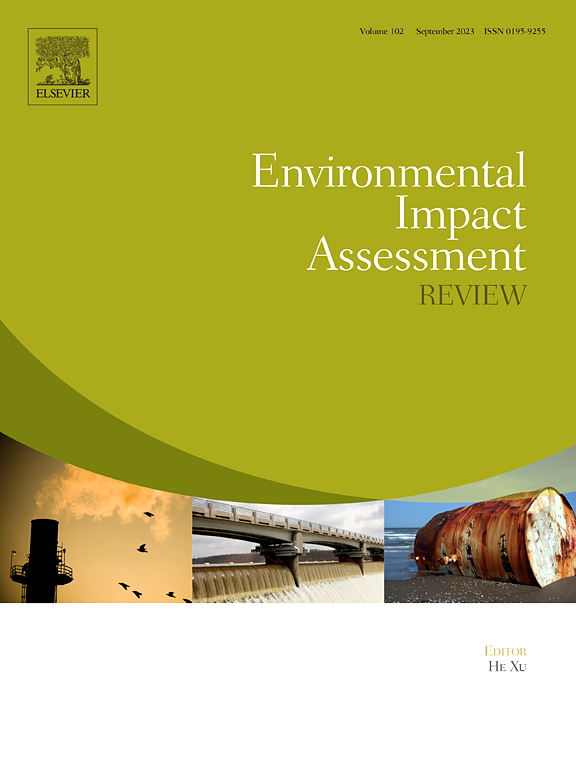Assessing ozone formation impact through SHAP interaction redistribution analysis: A novel framework for evaluating VOC photochemical loss and source interactions
IF 9.8
1区 社会学
Q1 ENVIRONMENTAL STUDIES
引用次数: 0
Abstract
Despite extensive research on tropospheric ozone (O3) formation, quantifying the impact of photochemical processes on source contributions remains challenging. This study developed a SHAP interaction redistribution analysis (SIRA) framework that systematically analyzes and reallocates machine learning interpretation results to quantify photochemical impacts on O3 formation and source contributions. Based on improved photochemical age parameterization method, the mean VOC photochemical loss concentration was 7.44 ± 10.36 ppb, with alkenes, aromatics, and OVOCs showing the highest ratios of photochemical loss to observed concentrations (1.35, 0.90, and 0.66, respectively). SHAP analysis revealed meteorological factors and NO as primary contributors to O3 formation (50.82 % and 12.24 %, respectively). The importance ratio of TVOCs to NOx was 1.5 during the study period and increased to 2.4 during O3 pollution episodes, indicating VOC-limited O3 formation with enhanced VOC sensitivity during pollution periods. The SIRA framework identified secondary generation (48.38 %), biogenic emissions (13.87 %), and industrial emissions (9.33 %) as major O3 contributors under photochemical loss conditions. After redistributing secondary generation through source interaction analysis, biogenic emissions and biomass burning showed the highest increases in SHAP importance (41.18 % with mean |SHAP values| = 1.87 and 40.27 % with mean |SHAP values| = 0.98, respectively), identifying them as the primary precursor sources for secondary generation. Among anthropogenic sources, vehicle emissions became the dominant contributor with a 17.0 % increase in contribution. This framework offers an innovative approach for quantifying the photochemical impacts on source contributions, enabling more targeted and effective strategies for O3 pollution control.
通过SHAP相互作用再分配分析评估臭氧形成的影响:一个评估VOC光化学损失和源相互作用的新框架
尽管对对流层臭氧(O3)形成进行了广泛的研究,但量化光化学过程对源贡献的影响仍然具有挑战性。本研究开发了一个SHAP相互作用再分配分析(SIRA)框架,系统地分析和重新分配机器学习解释结果,以量化光化学对O3形成和来源贡献的影响。基于改进的光化学年龄参数化方法,VOC的平均光化学损失浓度为7.44±10.36 ppb,烯烃、芳烃和OVOCs的光化学损失与观测浓度的比值最高(分别为1.35、0.90和0.66)。SHAP分析显示,气象因子和NO是O3形成的主要因子(分别占50.82%和12.24%)。在研究期间,TVOCs对NOx的重要性比为1.5,在O3污染期间,TVOCs对NOx的重要性比增加到2.4,表明在污染期间,vocs受限的O3形成对VOC的敏感性增强。SIRA框架确定,在光化学损失条件下,第二代排放(48.38%)、生物源排放(13.87%)和工业排放(9.33%)是主要的O3贡献者。通过源互作分析对次生源进行再分配后,生物源排放和生物质燃烧对次生源的重要性增加最多,分别为41.18%(平均|SHAP值| = 1.87)和40.27%(平均|SHAP值| = 0.98),是次生源的主要前体源。在人为来源中,车辆排放成为主要来源,贡献增加了17.0%。该框架提供了一种创新的方法来量化光化学对源贡献的影响,从而实现更有针对性和更有效的O3污染控制策略。
本文章由计算机程序翻译,如有差异,请以英文原文为准。
求助全文
约1分钟内获得全文
求助全文
来源期刊

Environmental Impact Assessment Review
ENVIRONMENTAL STUDIES-
CiteScore
12.60
自引率
10.10%
发文量
200
审稿时长
33 days
期刊介绍:
Environmental Impact Assessment Review is an interdisciplinary journal that serves a global audience of practitioners, policymakers, and academics involved in assessing the environmental impact of policies, projects, processes, and products. The journal focuses on innovative theory and practice in environmental impact assessment (EIA). Papers are expected to present innovative ideas, be topical, and coherent. The journal emphasizes concepts, methods, techniques, approaches, and systems related to EIA theory and practice.
 求助内容:
求助内容: 应助结果提醒方式:
应助结果提醒方式:


